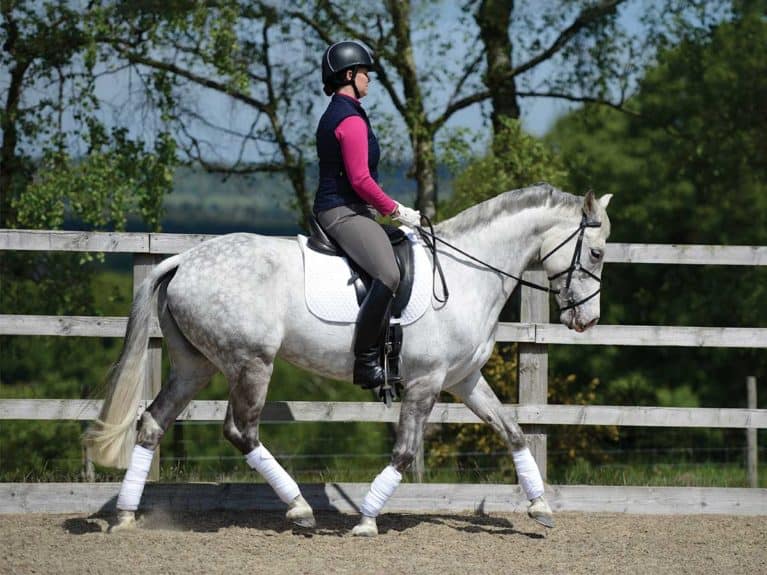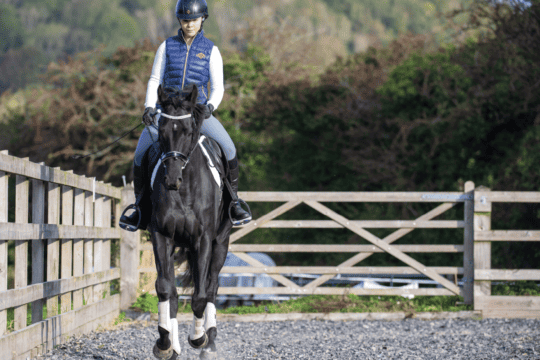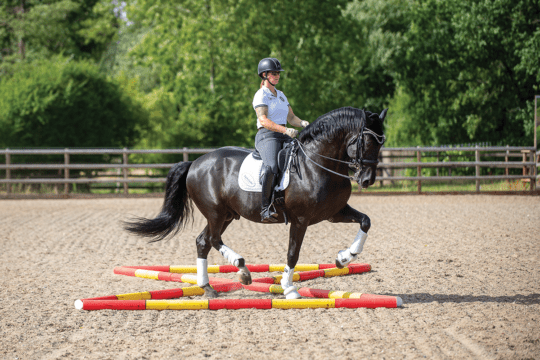Does the very thought of sitting to the trot fill you with horror? Master this tricky skill in no time with our bounce-busting tips

Done well, the sitting trot looks remarkably easy. Who among us hasn’t watched Charlotte Dujardin float across the arena, sitting to a ground-covering extended trot as though she’s on a carousel ride? Seeing the pros tackle it so gracefully is just about enough to motivate anyone to remove their stirrups, book in for a lunge lesson, and make light work of this seemingly simple skill.
Nonetheless, sitting to the trot can be a huge hurdle in many riders’ progress, and one that stands as a barrier to higher-level competition. This is commonly due to…
- tightness through your hips
- gripping with your knees
- balance issues
- an unconnected horse
Did you know?
Sitting trot is mandatory in dressage tests from Advanced Medium level onwards, and from CCI2* and above in eventing, though you’re often allowed to rise to medium gaits and extensions.
An independent seat
The major problem that most people have with sitting trot is a simple one – it’s difficult to stop bouncing and find that fluid, harmonious seat that the top riders seem to find so effortless. Then, in an attempt to stop the bouncing from worsening, the natural response is to tighten your grip with your thighs and knees. While this might initially seem more secure, you’ll soon find that the bouncing, now localised to your seatbones, intensifies as you lose the rhythm, your horse begins to hollow and disengage, and you’re forced to resume rising. Sound familiar? You’re not alone.
Perfecting the sitting trot is all about developing an independent seat, in which your core, hips and seat bones are able to follow your horse’s movement, while your legs remain long and communicative and your hands stay soft and steady. But don’t worry – if it all sounds a bit complicated, it’s actually just a case of building up muscle patterns, balance and confidence slowly and steadily, while training your horse to work through his back to support you.
Top tip
Not sure which muscles you should be engaging to help you sit the trot? Sit up straight and cough sharply – the muscles on the front and side of your torso that react as you do so are your ultra-important core muscles.
Try this…
Just as you allow your horse to gradually build his muscles by moving forward and backward within his gaits, the best way for you to perfect the sitting trot is to work in small bursts and allow yourself to stop before the whole thing unravels. This exercise combines both concepts in order to lift your horse’s back, creating a strong bridge for you to learn to move with, not against…
1. Establish your horse’s trot on a 20m circle. He should be moving positively into your hand in a rhythmical, balanced way.
2. In rising trot, let your leg hang down his side, sit tall and deep, and use your seat and hand to block his forward motion, while maintaining an active leg. Imagine you’re riding a piaffe – your horse should nearly trot on the spot.
3. After three or four strides, give slightly with your hand and ask your horse to open his stride again. Ride forward in a working or conservative medium trot for five to ten strides, then repeat the trot on the spot. This time, don’t rise – instead, use your hips to block the motion. Rise again as you ride forward.
4. After a few repetitions, your horse will be much more engaged, and his back will have begun to lift underneath you. Now you can use the same process to work on engaging your own middle section – sit for four or five strides, letting your hips move in time with your horse’s stride in a slightly upward, circular motion. Then rise for five strides, counting the rhythm aloud.
5. As you get the hang of it, work in changes of bend and rein, and slightly lengthen the amount of time you spend sitting. You won’t manage a lot at first – but if you systematically build up how much you do every time you ride, you’ll be able to sit an entire test before too long.
Top tip
Find a neutral spine and pelvis position by using leg-lifts. With your horse standing square, lift your legs back and away from your horse’s sides before replacing them, being careful to keep your knee pointing down. Your pelvis will be correctly aligned, and your leg long and draping.















